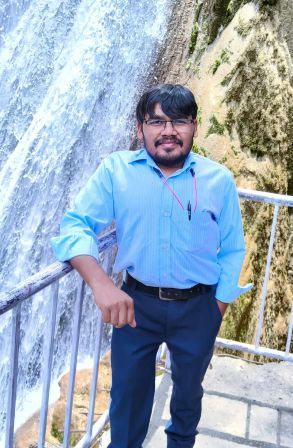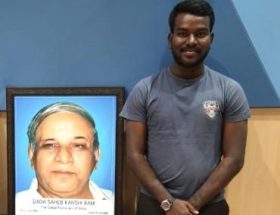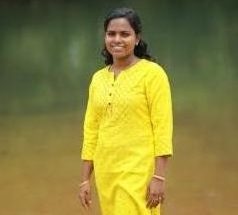Pramod Kumar
India celebrates 5th September as Teacher’s Day, which marks the birth anniversary of Dr. Sarvepalli Radhakrishan. According to Caste Hindu society and Brahminized narratives, he is considered a champion and role model for teachers, someone who inspires students. However, this raises the question of which student community is inspired by such figures and which student community is excluded from this inspiration. How far upper caste teachers and their associations are concerned about marginalized students who are cumulatively deprived under the caste system not only historically but also in modern times? In this article, I will critically explore and analyze the glorification of upper-caste icons under the guise of Teacher’s Day.
I will also examine how the Brahminical system has historically restricted marginalised students from accessing education. In the Brahminical Hindu social order, shudra and women were denied both the right to property and access to education. These rights were exclusively reserved for the upper castes and were deeply rooted in classical Hindu ideal texts. These texts were written by Brahmins to serve their interests and uphold the Brahminical hegemony. No one was permitted to challenge this hierarchy, which was maintained by Brahmins through religious and social power. They claimed divine authority to guide society, thus legitimizing the exclusion of shudras from education and property rights.
For example, the Purusha Sukta of the Rigveda states: “If a Shudra reads the Vedas and Puranas, gouge out his eyes; if he listens, pour molten lead into his ears; and if he recites them, cut out his tongue.” Manusmriti also supports such views, stating, “If a Shudra listens to the chanting of mantras, pour molten lead in his ears; and if he dares to recite them, cut out his tongue.”
A stark example of this systemic exclusion is the story of Shambhuka, a Shudra who was killed by Dashrath’s son Ram, for teaching Shudra children. In the Brahminical system, Shudras were denied the right to education, and Shambhuka’s actions were seen as a challenge to their authority, which led to his execution.
Another prominent example is Eklavya. Guru Dronacharya refused to teach Eklavya after knowing his caste, stating that he only teaches princes, basically those who come from the upper castes. Despite being denied guidance, Eklavya became an exceptional archer through self-practice. When Dronacharya heard about Eklavya’s talent, he demanded Eklavya’s thumb as Guru Dakshina (a teacher’s fee), effectively curbing his potential. This act was not just the loss of a thumb; it was the loss of knowledge and talent that could have inspired countless others from Eklavya’s tribal community.
Prof. Vivek Kumar, in his article “Deconstructing the Greatness of the Indian Guru,” argues that Dalit autobiographies reveal the deep-rooted caste-based discrimination that Dalit, Adivasi, OBCs and Muslims students who struggle in their everyday life at the hands of upper-caste teachers. These teachers would often assign menial tasks to Dalit students, like cleaning the school, rather than allowing them to study. This pattern of discrimination stretches from ancient times to the present. The same Brahminical mindset killed Indra Meghwal and continues to harm marginalized students. In their autobiographies, prominent Dalit scholars such as Om Prakash Valmiki (Joothan), Prof. Tulsiram (Murdahiya), D.R. Jatav (Mera Safar Meri Manzil), and Sheoraj Singh (Mera Bachpan Mere Kandhon Par) detail how upper-caste teachers discriminated and humiliated them during their school days, reflecting the ongoing prejudice of modern-day Dronacharyas.
This discrimination is not confined to primary education but extends to higher education as well. Are Indian universities free from caste-based discrimination? Are these spaces truly inclusive? The answer is NO. There is no space in Indian institutions that is free from casteism. While India is often called a land of agriculture, I argue that it is, in reality, a land of casteism, where discrimination exists in every corner of society.
More recently, the case of Dr. Payal Tadvi stands as an example of the institutional murder of marginalized students by the Brahminical system. Dr. Tadvi was the first person from her community to become a doctor. Her success had the potential to inspire many other girls from her community to dream of becoming doctors, engineers, and civil servants. However, by ending her life, the Brahminical system didn’t just stop her; they crushed the aspirations of an entire community. Similarly, in 2022, Indra Meghwal, a Dalit boy, was beaten to death by a teacher for touching a water pot (Matka).
Institutions like IITs, IIMs, and other prestigious universities are den of caste discrimination. Marginalized students, as well as Dalit faculty members, face prejudice from their upper-caste faculties. Multiple professors from marginalized sections have resigned from their posts at IITs after facing caste-based discrimination. In 2021, Prof. Vipin P. Veetil resigned from his position as an assistant professor at IIT Madras, citing caste-based discrimination as the reason.
In 2019, former Education Minister Ramesh Pokhriyal presented data in Parliament that exposed the stark reality of caste inequality in IITs. According to this data, 95% of faculty members in these institutions belong to the upper castes, while only 5% are from Scheduled Castes (SC), Scheduled Tribes (ST), and Other Backward Classes (OBC). The very structure of these institutions is exclusionary, making it impossible to create truly inclusive spaces.
The Education Ministry’s 2022 report, presented by Dharmendra Pradhan, revealed that from 2019 to 2022, a total of 122 students committed suicide in Indian universities. All of these students belonged to SC, ST, and OBC categories. This data underscores the harsh reality that caste-based discrimination is deeply embedded in our educational institutions, from the classroom to the corridors of power.
On September 5th, Teacher’s Day, faculty members from Delhi’s progressive universities, including JNUTA, organized the Chhatra-Shikshak Ekta March (Students-Teachers Unity March), calling for unity in support of students’ rights. However, this situation reminds me of a historical parallel: When Dr. B.R. Ambedkar urged Gandhi to abolish untouchability, Gandhi responded by emphasizing the fight for Azadi (freedom). Ambedkar then asked, “Freedom for whom?” Similarly, I now ask: Whose students’ rights are being advocated for in this march? However, this raises a crucial question in my mind: How many upper-caste teachers actively participate in or raise their voices against caste discrimination within university spaces? Who, if anyone, from the upper castes, will take a stand against these injustices?
It is difficult to imagine true unity between teachers and students when caste-based discrimination persists in these institutions. In premier institutions like IITs, IIMs, and NITs, Dalit students continue to commit suicide, often due to the caste-based discrimination and humiliation they face from upper-caste faculty. Why is there no outcry? Do these teachers tacitly endorse this system? Caste-based discrimination remains rampant in Indian universities. How many upper-caste teachers have openly opposed such practices? Who perpetuates this discrimination against Dalit students in academic evaluations, such as viva voce, where marginalized students are often unfairly awarded minimal marks? The bias and prejudice towards Dalit and marginalized students is a systemic issue which restricts marginalized students in the education system.
In the last, I would like to quote Babasaheb Ambedkar in order to deconstruct the morality of Sarvapalli Radhakrishna, whom Indian society largely celebrates and establishes as an icon in order to celebrate Teacher’s Day. And this episode of Teacher’s Day needs to be understood by critically analysing Hindu mythological stories where Ambedkar was criticizing and challenging the morality of Hindu Gods in Riddle of Hinduism, where he mentioned and discussed Rama by asking whether Rama really deserves to be God and to be worshiped? His undemocratic attitude towards his wife Sita and his Caste cruelty towards Shambuka, on the lines of gender bias and the lines of the caste must be called into question. In the same way, he also exposed Krishna’s illicit connections and relationship with the women—the other wrongful social activities towards the Indian women community and others.
From an Ambedkarite perspective, based on the above mentioned and discussed mythological episode this article questions the morality of Dr Sarvapalli Radhakrishnan who Indian Caste Hindus projected as the teachers’ icon while celebrating Teachers’ Day on 5th September. Does Sarvapalli Radhakrishrishna really deserve to be celebrated as an icon for Teachers Day? when he plagiarized a student’s thesis in order to submit it. His casteist bias and caste prejudices he has espoused in his book on Hindu philosophy is very open to see; he supports varna system and Manu dharma shastra. It needs to be critically analyzed since if a person does not practice democratic values and ideas in their everyday life and he is established as an icon, the people following him would be misled.
In the conclusion part of this article, I would like to say that the Bahujan community continues to remember their own icons, such as Savitribai and Jyotirao Phule, for their remarkable contributions to the education of Shudras and women. At a time when Brahminical schools denied access to education for these marginalized groups, the Phules took it upon themselves to educate those who had been deprived of this basic right. When Savitribai Phule went to teach her students, she often faced hostility from the upper castes, who would throw mud and cow dung at her. Despite these challenges, she remained a true educator who made significant contributions to the education of those whom the Brahminical system had deliberately excluded.
Savitribai and Jyotirao Phule stand as real champions and role models for students, as they dedicated themselves to educating marginalized sections of society, particularly women. Unfortunately, their legacy has been overshadowed, and others have been celebrated as champions of education instead. It is important to critically analyze contributions to education in the context of social upliftment and ask ourselves: Who is the true teacher—the one who selflessly contributed to the education of the oppressed or the one who plagiarized the work of his own students?
Ultimately, it comes down to your morality and values. Whom do you choose to honour, and whom do you follow?
~
References
- https://indianexpress.com/article/education/resolve-differences-sc-to-dalit-prof-others-8472216/#:~:text=Putting%20an%20end%20to%20a,the%20best%20interest%20of%20the
- http://watchout.iitr.ac.in/2023/03/the-merit-myth
- http://164.100.24.220/loksabhaquestions/annex/16/AS267.pdf
- https://www.roundtableindia.co.in/deconstructing-the-greatness-of-indian-gurus/
- https://thewire.in/caste/400-academics-condemn-caste-discrimination-institutional-harassment-in-iit-kanpur
- chrome-extension://mhnlakgilnojmhinhkckjpncpbhabphi/pages/pdf/web/viewer.html?file=https%3A%2F%2Fia601500.us.archive.org%2F4%2Fitems%2Friddles-in-hinduism%2FRiddles%2520in%2520Hinduism.pdf
- https://www.angelfire.com/ak/ambedkar/BRManusmriti.html
- https://www.deccanherald.com/india/phd-students-fight-against-caste-discrimination-raises-dalit-hopes-1056028.html
~~~
Pramod Sagar, Research Scholar at the Centre for Study for Law and Governance, JNU, is the President of BAPSA.










